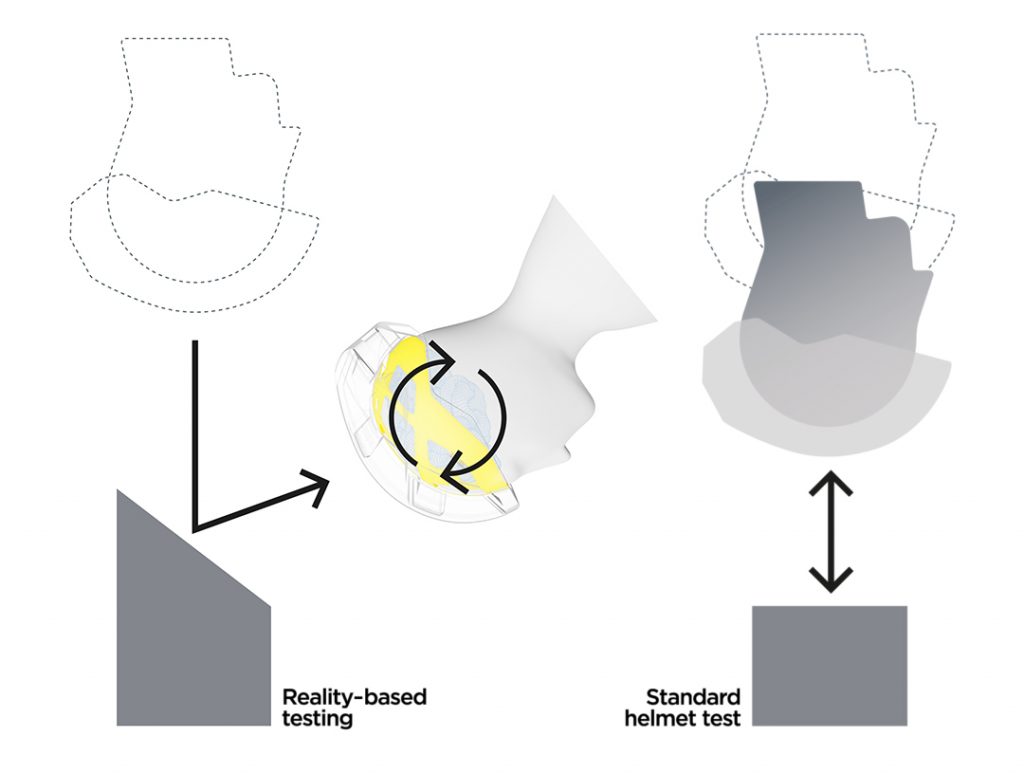You might think of the human brain as a semi-firm organ. But in reality, it has a consistency more like a gel. Because the brain consists primarily of water, it is incompressible but sensitive to shear deformations. “Shear” refers to unaligned forces pushing the brain in two different directions. All of this means the brain is very sensitive to rotational forces, let’s explain why!
When you fall, the head is most likely to hit the ground at an angle. At the moment of impact, something called tangential force can make the head rotate more or less depending on the impacting object or surface. Unfortunately, standard helmet tests do not mimic this action. Instead, helmets are tested and certified by being dropped vertically onto a horizontal surface. This method can measure the energy of a linear impact on the helmet and head, but it does not address rotational motion.

Depending on the severity and location of an impact, the factors and forces that can lead to injury are complex. But we know that where a linear head motion can cause a skull fracture or contusion, the rotational motion may also cause injuries such as concussions, subdural hematoma, or diffuse axonal injury.
A concussion is a term that defines a symptom after an impact on the head. The symptom can be headache, dizziness, memory loss, etc. The mechanics behind the symptoms can differ and are not fully understood. Several researchers have linked the cause of concussions to impacts on the head including rotational motion.
Subdural hematoma is bleeding between the brain and the skull bone inside the dura mater, a thin membrane made of dense irregular connective tissue surrounding the brain and spinal cord. The bleeding is caused by rapid rotational movements of the head, resulting in overstretching of the bridging veins supporting the brain with blood.
Diffuse Axonal Injury (DAI) is damage to the axons in the brain. This type of injury is due to large deformations (strain) in the brain and has been shown to be caused mainly by rapid rotational motion of the head.
The term “concussion” is a common way to describe different types of brain injuries. From simple, albeit painful headaches to more serious injuries, the term covers a lot of ground. But it’s more a way to describe symptoms than a specific diagnosis. In the U.S. specifically, there are a large number of ongoing research projects trying to understand how repetitive concussions may lead to long-term consequences.